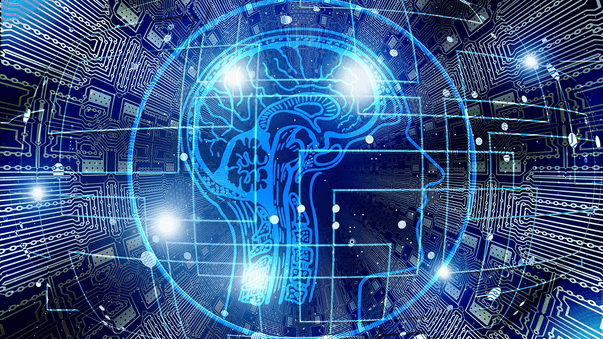Deep Learning AI Finds Powerful Antibiotics

In a breakthrough for Artificial Intelligence (AI) application to drug discovery, machine learning algorithms have identified a new, very effective antibiotic drug (see below).
“Named for the AI in 2001: A Space Odyssey, the antibiotic, halicin, successfully wiped out dozens of bacterial strains, including some of the most dangerous drug-resistant bacteria on the World Health Organization’s most wanted list,” notes SingularityHub.
"We wanted to develop a platform that would allow us to harness the power of artificial intelligence to usher in a new age of antibiotic drug discovery," said MIT professor James Collins in an MIT press release. "Our approach revealed this amazing molecule which is arguably one of the more powerful antibiotics that has been discovered."
"The machine learning model can explore, in silico, large chemical spaces that can be prohibitively expensive for traditional experimental approaches," added MIT professor Regina Barzilay.
“There is still a question of whether machine-learning tools are really doing something intelligent in healthcare, and how we can develop them to be workhorses in the pharmaceuticals industry,” noted Barzilay as reported by Financial Times. “This shows how far you can adapt this tool.” Financial Times underlines that “the use of machine learning to accelerate drug discovery could bring down the cost of generating future antibiotics, while targeting currently untreatable diseases could open up lucrative new markets.”
AI Finds New Powerful Antibiotic Drug
Using a deep learning algorithm, MIT researchers have identified a powerful new antibiotic compound. Deep learning is a subset of Artificial Intelligence (AI). The discovery is described in a research paper published in Cell.
The drug is called “halicin.” In laboratory tests with mice, halicin killed many of the world's most problematic disease-causing bacteria, including some strains that are resistant to all known antibiotics. It also cleared infections in two different animals.
The AI algorithms also identified 23 other candidate drugs. They are different from existing antibiotics and predicted to be non-toxic to human cells.
Remotely-Chargeable Neural Implants
Rice University engineers have developed a neural implant that can be both programmed and charged remotely with a magnetic field. The implant is dubbed MagNI (for magnetoelectric neural implant). And it incorporates magnetoelectric transducers to harvest power from an alternating magnetic field outside the body.
MagNI is described in a study presented at the International Solid-State Circuits Conference. It may make possible embedded devices like a spinal cord-stimulating unit with a battery-powered magnetic transmitter on a wearable belt.
3D Atomic-Scale Map Combats Coronavirus
Researchers at UT Austin and the National Institutes of Health have created a 3D atomic scale map of the part of the 2019 coronavirus that attaches to and infects human cells. Mapping this part, called the spike protein, is viewed as an essential step so researchers around the world can develop vaccines and antiviral drugs to combat the virus.
The map is described in a research paper published in Science. The researchers are also working on a related vaccine candidate.
CRISPR Cells Improve Drug Production Quality
Researchers at Technical University of Denmark have shown that EPO can now be produced in higher quantities and with better quality in mammalian cells engineered using CRISPR gene editing technology.
EPO is an important drug for treating anemia. It works naturally in the body by stimulating red blood cell production. And the estimated market for EPO therapy is around 11 billion dollars annually.
A study published in Metabolic Engineering describes how the researchers were able to reduce roadblocks and improve EPO production and product quality.
Synthetic Genome Can Copy Itself
Synthetic biology researchers at Max Planck Institute have developed an artificial genome that can copy itself. The generation from inanimate building blocks of life-like systems able to replicate themselves is the goal of synthetic biology.
As described in a paper published in Nature Communications, the researchers assembled replicating artificial genomes from up to eleven ring-shaped pieces of DNA. According to the researchers, this is an important step towards a continuously self-replicating system that mimics biological processes.
New Technique Analyzes Individual Cancer Cells
Cancer scientists at University College London have found a way to analyze the individual behavior of millions of different cells living inside lab-grown tumors. The new technique is outlined in a research paper published in Nature Methods.
The scientists prepared cells for analysis on a mass spectrometer, which is able to measure communication signals in millions of single cells. According to the scientists, this is a breakthrough that could lead to new personalized cancer treatments.
More Articles
Don't miss a beat! In our Pulse Newsletter, Thrivous curates the most important news on health science and human enhancement, so you can stay informed without wasting time on hype and trivia. It's part of the free Thrivous newsletter. Subscribe now to receive email about human enhancement, nootropics, and geroprotectors, as well as company news and deals.
Read more articles at Thrivous, the human enhancement company. You can browse recent articles in Thrivous Views. See other Pulse Newsletter articles. Or check out an article below.
-
The Internet of Neuro-Electronics
An international team of scientists has created a hybrid neural network of biological and artificial neurons. The scientists have shown that ...
-
Enhance Motor Memory with Boswellia Serrata
I'm writing part of this supplement science update while in a car. My road trip was delayed six hours. And I'm ...


